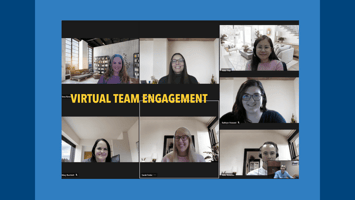In a recent survey by Visier, 56% of respondents said they stayed connected to work while on...
The Importance of Upskilling, Reskilling & Ongoing Development
In today's job market, not only are companies working to recruit skilled candidates, but also are faced with the reality that their existing employees are leaving. Attracting and retaining talent is among top concerns with HR pros. There are two key definitions HR pros must know when discussing ongoing development.
Upskilling: Building upon employees' existing skillsets to help them grow and improve.
Reskilling: Teaching them new skills so they can do a different job or explore a different career path.
93% of millennial and Gen-Z workers expect employers to provide ongoing learning opportunities. According to The World Economic Forum, 50% of all employees will need reskilling in the next five years, as the in-demand skills across jobs continue to change.
Bottom line? Prioritizing upskilling, reskilling and ongoing development is critical. It could mean the difference between keeping and losing good employees.
How do you get started? Before you focus on upskilling and reskilling, take a self-assessment of your existing culture. Is continued learning supporting? Do you support or require professional skills development?
You should be working with your employees to create a personalized learning and development plans. By learning where they see themselves in the next year, what skills they want to enhance and any new skills they want to learn, your employees will know you're investing time into their development.
"Ongoing training and development is essential. The candidate market, competition, and technology is always changing. To stay competitive and cutting edge, you have to continue to grow and develop yourself as well. Embrace collaboration and exploring trainings/webinars/certification courses as a team. Share takeaways and grow together. Training should be fun, and it's always about how you approach it. Be vulnerable. Try new things and always switch things up!"
The most important thing you can do is understand your employees' needs and goals. If you want to retain your great employees and attract new ones, create an culture of ongoing development, upskilling and reskilling.



